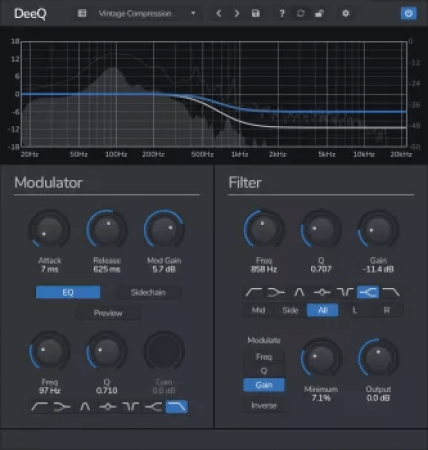TTC - Music and the Brain
Music is an integral part of humanity. Every culture has music, from the largest society to the smallest tribe. Its marvelous range of melodies, themes, and rhythms taps into something universal. Babies are soothed by it. Young adults dance for hours to it. Older adults can relive their youth with the vivid memories it evokes. Music is part of our most important rituals, including those marking birth, weddings, and death. And it has been the medium of some of our greatest works of art.
Yet even though music is intimately woven into the fabric of our lives, it remains deeply puzzling, provoking questions such as:
How and why did musical behavior originate?
What gives mere tones such a powerful effect on our emotions?
Why does music with a beat give us the urge to move and dance?
Are we born with our sense of music, or do we acquire it by experience?
In the last 20 years, researchers have come closer to solving these riddles thanks to cognitive neuroscience, which integrates the study of human mental processes with the study of the brain. This exciting field has not only helped us address age-old questions about music; it also allows us to ask entirely new ones, like:
Do the brains of musicians differ from non-musicians?
Can musical training promote cognitive development in children?
Does making or listening to music help patients with brain damage?
Is there a deep connection between music and language?
In Music and the Brain, neuroscientist and Professor of Psychology Aniruddh Patel of Tufts University probes one of the mind’s most profound mysteries. Covering the latest research findings—from the origins of music’s emotional powers to the deficits involved in amusia, or the inability to hear music—these 18 enthralling half-hour lectures will make you think about music and your brain in a new way.
Designed for music lovers and brain enthusiasts at all levels, Music and the Brain assumes no prior background in the subject. The course is truly interdisciplinary, covering fundamental ideas of music theory, neuroanatomy, and cognitive science, while spotlighting the diverse range of experiments, discoveries, and debates in this fast-changing field.
A Whole Brain Phenomenon
You will learn that music is not just about the auditory system; it’s about the links between sound processing and all the other things that brains do, such as moving, planning, remembering, imagining, and feeling. This means that music shows up in some surprising contexts. For instance, learning to play a musical instrument improves the brain’s processing of speech and helps children who are learning to read. Another example: patients with Parkinson’s disease can enhance their motor skills by participating in musical activities.
Indeed, music happens in so many different parts of the brain that it defies the left brain/right brain distinction. Music cognition is a whole brain phenomenon, as you will discover in numerous brain scans that document where the various aspects of music are centered.
To help you experience these concepts for yourself, Music and the Brain is also filled with dozens of original musical examples composed especially for the course. Having never heard these passages before, you will have no prior associations as you listen to different pitch sequences and rhythms, experiencing some of the many feelings that music can evoke. Among the musical sensations considered in the course are these:
Getting chills: Why do certain passages of music elicit what is essentially a fear response—chills and goosebumps—even though we take great pleasure in such moments? Researchers have proposed several theories to explain the reason for this strange reaction.
Melodic mastery: Among animals, humans appear to have a unique ability to recognize melodies as the same when transposed up or down in pitch. Professor Patel suggests an evolutionary connection to the difference in pitch register between male and female human voices.
Music and spoken rhythm: Why does the music of the French composer Claude Debussy sound so different from that of his English contemporary Sir Edward Elgar? Compare the rhythmic patterns of their music and respective languages for intriguing clues.
Sounds of nature: The mix of tones that makes a piano sound different from a violin or a trumpet is called timbre. One reason we find musical instruments with complex harmonic tones so attractive is that they are reminiscent of the timbre of the human voice.
A Transformative Spark
Professor Patel has been lauded by scientists and musicians alike. In 2008, he garnered the prestigious Deems Taylor Award for outstanding coverage of music, presented by the American Society of Composers, Authors and Publishers. His work has also received acclaim from neurologist Oliver Sacks, best-selling author of Musicophilia. An exciting and inspiring thinker, Professor Patel draws fascinating connections that stay with you, such as when he compares the invention of music to the discovery of fire. He argues that neither is genetically predetermined, but once developed, both were so useful that they spread universally. Fire provided the physical benefits of cooking, warmth, and protection, while music’s advantages were almost entirely mental and social—as an emotional stimulant, aid to memory, and energizer for group bonding.
But music is even more remarkable than fire, because it can alter the structure of our brains. Learning to play a musical instrument improves speech perception, which in turn makes learning to read easier and aids in gauging emotions in others. Music also enhances the capacity to understand hierarchical structures, handle multiple tasks, and remember long sequences of information. And for patients with stroke, Alzheimer’s, and other brain disorders, it is a potential path to enhancing neural and motor functions. How does it do all of this and more? Music and the Brain is your unrivaled explanation of this marvelous gift.
18 lectures - 30 minutes each
1 Music: Culture, Biology, or Both?
2 Seeking an Evolutionary Theory of Music
3 Testing Theories of Music's Origins
4 Music, Language, and Emotional Expression
5 Brain Sources of Music's Emotional Power
6 Musical Building Blocks: Pitch and Timbre
7 Consonance, Dissonance, and Musical Scales
8 Arousing Expectations: Melody and Harmony
9 The Complexities of Musical Rhythm
10 Perceiving and Moving to a Rhythmic Beat
11 Nature, Nurture, and Musical Brains
12 Cognitive Benefits of Musical Training
13 The Development of Human Music Cognition
14 Disorders of Music Cognition
15 Neurological Effects of Hearing Music
16 Neurological Effects of Making Music
17 Are We the Only Musical Species?
18 Music: A Neuroscientific Perspective
home page:
http://www.audible.com.au/pd/Non-fiction/Music-and-the-Brain-Audiobook/B01598KA2K#publisher-summaryhttp://www.nitroflare.com/view/E826CF2E624E12D/Brain.part01.rar
http://www.nitroflare.com/view/B0CE4ED1C2867C4/Brain.part02.rar
http://www.nitroflare.com/view/D1AE16A373E6198/Brain.part03.rar
http://www.nitroflare.com/view/1CD3B8E40845AC5/Brain.part04.rar
http://www.nitroflare.com/view/E75AB9CEAC1AE28/Brain.part05.rar
http://www.nitroflare.com/view/9B6871FCAB9BB82/Brain.part06.rar
http://www.nitroflare.com/view/D2578BFA918739D/Brain.part07.rar
http://www.nitroflare.com/view/26A5D828E812229/Brain.part08.rar
http://www.nitroflare.com/view/AA4E2E54E992E6C/Brain.part09.rar
http://rapidgator.net/file/cef04f8d71057f35ecbbc68c27028b25/Brain.part01.rar.html
http://rapidgator.net/file/6c9665e3f59941313b58902706ef1360/Brain.part02.rar.html
http://rapidgator.net/file/1c4d69d02e0c688488e4a94097d9bad8/Brain.part03.rar.html
http://rapidgator.net/file/ebf2fd5b10e2d428faa92bb02c27cf8d/Brain.part04.rar.html
http://rapidgator.net/file/f3c1cac7f80daff7f625e9e6a596edeb/Brain.part05.rar.html
http://rapidgator.net/file/4bb3692fea444adc4e2c5b2426bbf925/Brain.part06.rar.html
http://rapidgator.net/file/6989bf80efc7f616587e6b19d2e8ab83/Brain.part07.rar.html
http://rapidgator.net/file/28c8bad5d6ae7f23ad33cf97f4b6b670/Brain.part08.rar.html
http://rapidgator.net/file/4ddf56db95f5198e9587f92361fa27b2/Brain.part09.rar.htmlLinks are dead? You can send request (you must be registred user) to re-upload articles
with dead links and our team will try to re-upload files for you as soon as possible.
with dead links and our team will try to re-upload files for you as soon as possible.
Related News:
 Awakening your Business Brain: An iCadenza Guide to Launching your Music Career
Awakening your Business Brain: An iCadenza Guide to Launching your Music Career2015 | 142 pages | ASIN: B016N4ZI7Q | English | EPUB: 142.41 KB | PDF: 431.93 KB Can you really be an artist and a businessperson at the same time? Aspiring musicians have been asking this for ages, but in a new world of interconnectivity, the answers are closer than ever before. Jennifer Rosenfeld and Julia Torgovitskaya, founders of iCadenza and Cadenza Artists, are here to share the lessons of...
 UDEMY Read Music Notes Fast L1 Beginning Music Note Attack TUTORIAL
UDEMY Read Music Notes Fast L1 Beginning Music Note Attack TUTORIALCOMPRISED | July 12 2015 | 112.4 MB Read Music Note Attack is an intuitive visual method to read music fast with memory. For Guitar, ukulele, piano, violin. Read Music Notes FAST Level 1: Speed Read Music Notes - Visual Memory in the Brain! An in-depth look into Reading 22 Music Notes Quickly from Treble Clef & Bass Clef. 56 Lectures with 2 Hour Content....
 Guide to Brain-Computer Music Interfacing
Guide to Brain-Computer Music InterfacingGuide to Brain-Computer Music Interfacing By Eduardo Reck Miranda, Julien Castet 2014 | 321 Pages | ISBN: 1447165837 | PDF | 5,89 MB The emergence of more affordable EEG equipment is fostering a renaissance of approaches to making music with brain signals. This Guide to Brain-Computer Music Interfacing (BCMI) presents a world-class collection of BCMI tools with which adventurous explorers may...





Comments for TTC - Music and the Brain:
No comments yet, add a comment!